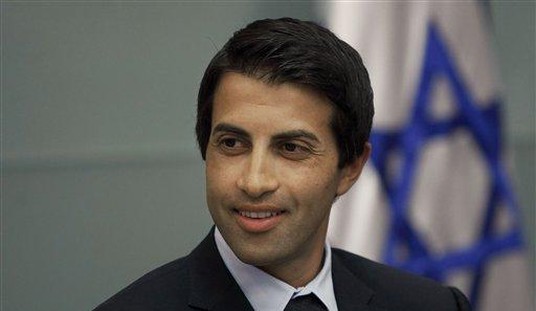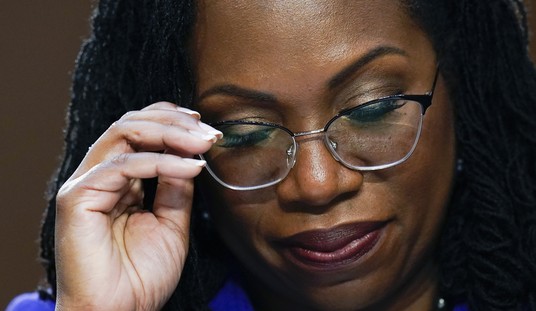“The Republican Occupation of Detroit,” as charted by Sally Kohn in — where else? — the Daily Beast:
Detroit is no longer a city. Sure, it looks like a city. But that’s a façade. The oldest city in the Midwest—home of the first traffic light in America and the first urban freeway, the birthplace of Motown and the automobile and the ice cream soda—is now a ghost. Detroit, the place, is recovering—even thriving in some ways. But Detroit, the political entity, is dead.
In 2011, Republican Governor Rick Snyder signed into law Public Act 4, which gave the state the power to place cash-strapped cities and school districts under the control of state-appointed emergency managers. In 2012, Michigan voters overturned that law. But in 2013, Snyder signed a barely revised version of the emergency manager law—and then used it to take over Detroit.
So in the fall of 2013, Detroit voters went to the polls to elect a new mayor and City Council, but it didn’t matter. The powers of the mayor and City Council have effectively been suspended. Detroit’s emergency manager, Kevyn Orr, appointed by Snyder, has all the power and then some. A Democratic city that elected Democratic leaders is now controlled by the appointee of a Republican governor.
Kohn skips about a two-thirds of a century worth of history in her conclusion:
In the early 1900s, African Americans moved to Detroit to escape the inequality and injustice that persisted in the South. Much of the Detroit as we celebrate it in our national lore sprang from black political self-determination, economic leadership, and cultural expression. Plenty of dynamics conspired to dismantle Detroit’s greatness. But even bankrupt, struggling, falling apart, Detroit could still cling to its identity as a city—whatever price that meant in the past, whatever hope it held for the future. Now because of Snyder, even that is gone.
But the “Detroit as we celebrate it in our national lore [that] sprang from black political self-determination, economic leadership, and cultural expression” arose in the late-1960s after the city’s riots of 1967, prior to which, as Thomas Sowell wrote, “Detroit’s black population had the highest rate of home-ownership of any black urban population in the country, and their unemployment rate was just 3.4 percent.”
After the riots, the result was a generation of leadership under Mayor Coleman Young, who used racial grievance politics to maintain his power base, even as he was driving the city into the ground. (Today, Detroit’s unemployment rate is a whopping 23 percent.) Zev Chafets’ brilliant 1990 book Devil’s Night and its portrait of Young’s massive damage to the city reads as if it could be written yesterday. Dresden, Hiroshima and Berlin were all rebuilt in just a few years of their bombings. In contrast, Young mercifully left office in 1994, and yet time stands still in that particular war zone.
And note the mirror images on display in these quotes. In his 1990 book, Chafets quoted Arthur Johnson (1925-2011), then the president of the Detroit chapter of the NAACP and a vice-president at Wayne State University:
“Detroit has helped nurture a new black mentality,” Johnson said, pounding his desk for emphasis. “More than any other city, blacks here make an issue of where you live. If you’re with us, you’ll find a place in the city.”
Whites often say, in their own defense, that many middle-class blacks also leave the city at the first opportunity. I mentioned this to Johnson, but he waved it away. “The majority of the black middle class is here. We are engaged in the most determined, feverish effort to save Detroit. Why? Because Detroit is special. It’s the first major city in the United States to have taken on the symbols of a black city. It has elected a strong, powerful black mayor, powerful in both his personality and his office. Detroit, more than anywhere else, has gathered power and put it in black hands.”
In her new article, Kohn writes:
Detroit—a majority African-American city—is now controlled by a governor elected by a majority of white voters in the state. It really doesn’t matter that Kevyn Orr, the state-appointed emergency manager, is black, nor that Mike Duggan, Detroit’s mayor, is white. What matters is that half of the state’s black population lives in Detroit. So through the state takeover, “half of black Michiganders have essentially lost the right to vote,” says Ife Kilimanjaro, co-director of the East Michigan Environmental Action Council.
Kohn is, knowingly or unknowingly, continuing in the tradition of racial demonization that Young used to build his career. Beyond the subtext of her politely calling Orr, the emergency manager of Detroit’s exhausted city government an Uncle Tom, it’s not as if the rest of her column is breaking any new ground here. Kohn is following in the footsteps of MSNBC newsreaders last year during Detroit’s announcement that it was declaring bankruptcy, such as Art Melber, who blurted out that “Detroit is fast becoming the most libertarian city in the United States.” Not to mention Ed Schultz and the network’s veteran race-baiter, Melissa Harris-Parry:
Detroit’s fiscal ruin and subsequent bankruptcy was actually the result of the city being pretty much a “conservative utopia,” Ed Schultz informed us. It’s what happens when “government is small enough to drown in your bathtub” and “exactly the kind of thing many Republicans would impose on us,” insisted Melissa Harris-Parry.
A few months ago, Kohn explained “What I learned as a liberal talking head on Fox News” to the Christian Science Monitor:
My time at Fox News was marked by meeting and working with some of the kindest, smartest, and most talented people I’ve had the pleasure of meeting in life. As I said in my TED talk, Sean Hannity is one of the sweetest people you’ll ever meet – and even now that I’ve parted ways with Fox, he remains a good friend and mentor.
For a radical progressive who once harbored negative stereotypes about folks on the right, it was a turning point for me to meet people such as Mr. Hannity, Karl Rove, Monica Crowley, Sarah Palin, and so many others, and see that – though we certainly disagree profoundly on political issues – they’re personable and kind and human. Just like me.
It’s strange to suggest that a seemingly simple realization such as that is in fact a profound revelation, but in our hyperpartisan era, when we often vilify the other side as being less-than-human, it is.
That was back in April. Either Kohn has forgotten it all in the months since, or she didn’t believe her epiphany in the first place.










Join the conversation as a VIP Member